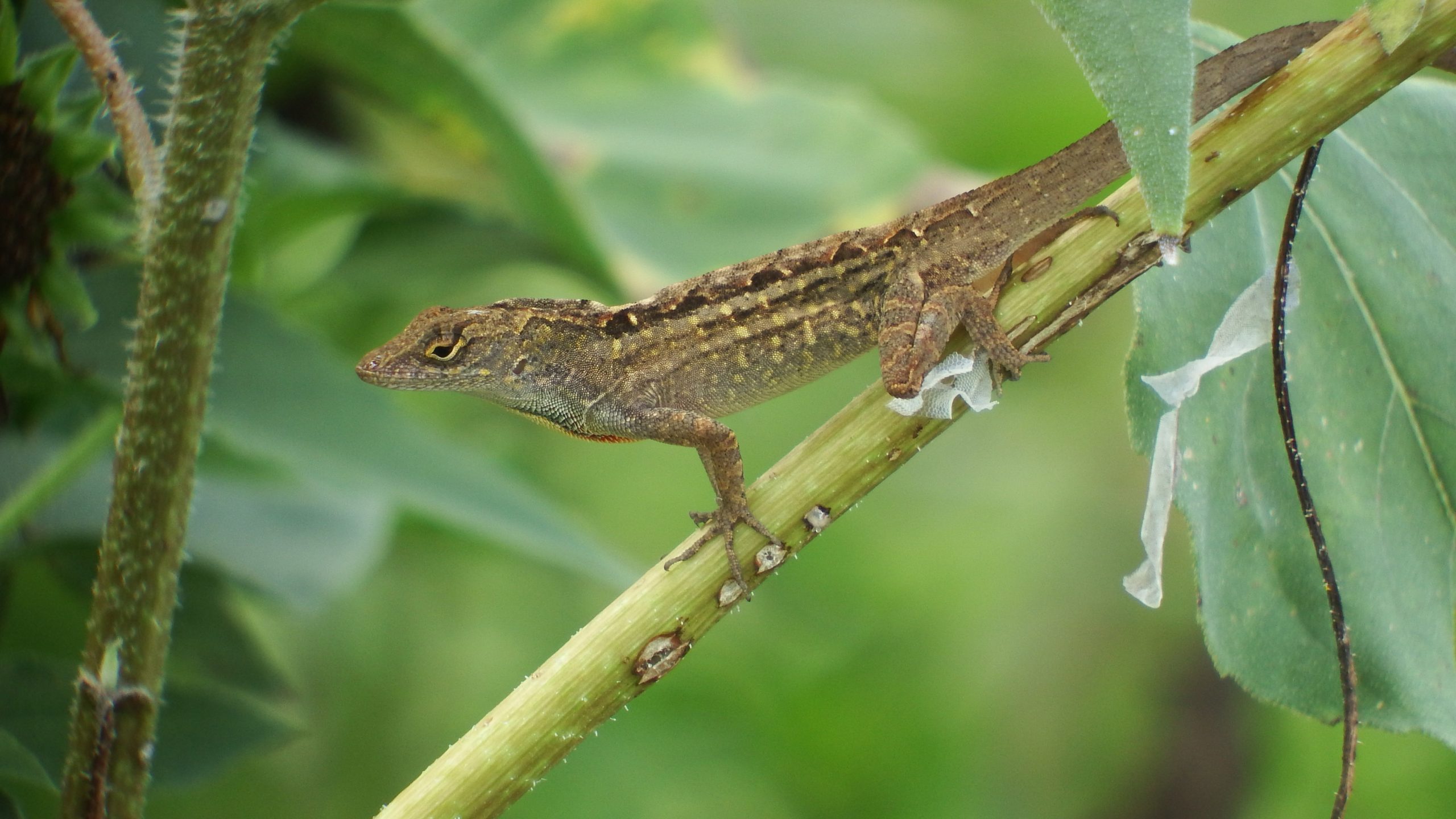In which a Cuban anole sheds and eats his skin!

I had hoped to save this for Halloween. Because it’s creepy and gross. But, while a week ago, cold and rainy would have seemed like just the ticket to a delightful ramble in the park, turns out that cold wet feet are not a bonus, so I’m staying inside today and rolling my little friend out early.
Meet the Cuban anole. You’ve probably met him before. He’s the brown guy who replaced the green guy in your yard. Those green lizards who do push-ups while inflating and deflating a pink dewlap are Green anoles. They are still in your yard, just higher up in the trees. They moved there because the faster and more muscular Cuban anoles invaded and took control of the lower environment.
Cuban anoles are native to Cuba. About a hundred years ago, they arrived in Florida (probably hitchhiking in some cargo) and set up shop. About 30 years ago, they pushed their way into Louisiana and Texas. I started seeing them in force about three years ago and by now, they greatly outnumber the Green anoles, at least on the ground.
Some sources I found say that the Green anole has developed larger toe pads in the last few years in adaptation to their new arboreal life.
I saw this guy on the stem of a common sunflower and noticed him flinch and then chew. I thought he was catching a fly, so I trained my camera on him, zoomed in, and found him eating his own skin.
Lizard skin is not soft and flexible. As the lizard grows, its skin gets tight. The lizard grows a new layer of appropriately sized skin and then pops off the too-small outer layer. They don’t do this the way a snake does. A snake sheds all her skin at one time. She just puffs up until the old skin is loose enough and then she slithers out of it leaving behind a souvenir that many a child (and grown-up naturalist) is tickled to find in the wild.
Lizards shed their skin in patches. Some, like Cuban anoles, eat that shed skin. There are a few reasons why they do this somewhat disgusting thing. First, not all nutrients are easy to come by and shed skin contains important minerals. Second, consuming the shed skin removes evidence that a small and tasty lizard is in the area. Third, they probably enjoy it.
This third reason is intriguing. Humans have big brains. Lizards have small brains. In fact, we refer to the more primitive parts of our brains as “lizard brains.” Our complex brains allow us to think things through and decide to do things that we know are good for us but are not particularly pleasurable. Mammograms spring to mind. Lizards, and almost all animals are simply not capable of having those kinds of thoughts. The only reason an animal will do something without compulsion is that it feels good.
So in all its disgusting glory, here is a Cuban anole, shedding and eating his skin. Pay particular attention to how our friend stretches out his toes to pop the skin from those tiny digits and how white the skin under his neck and along his lower body is. That’s the dead skin waiting to be shed.
And happy early Halloween. I promise your naturalist will find her warmer clothing and thicker blood any day now.

